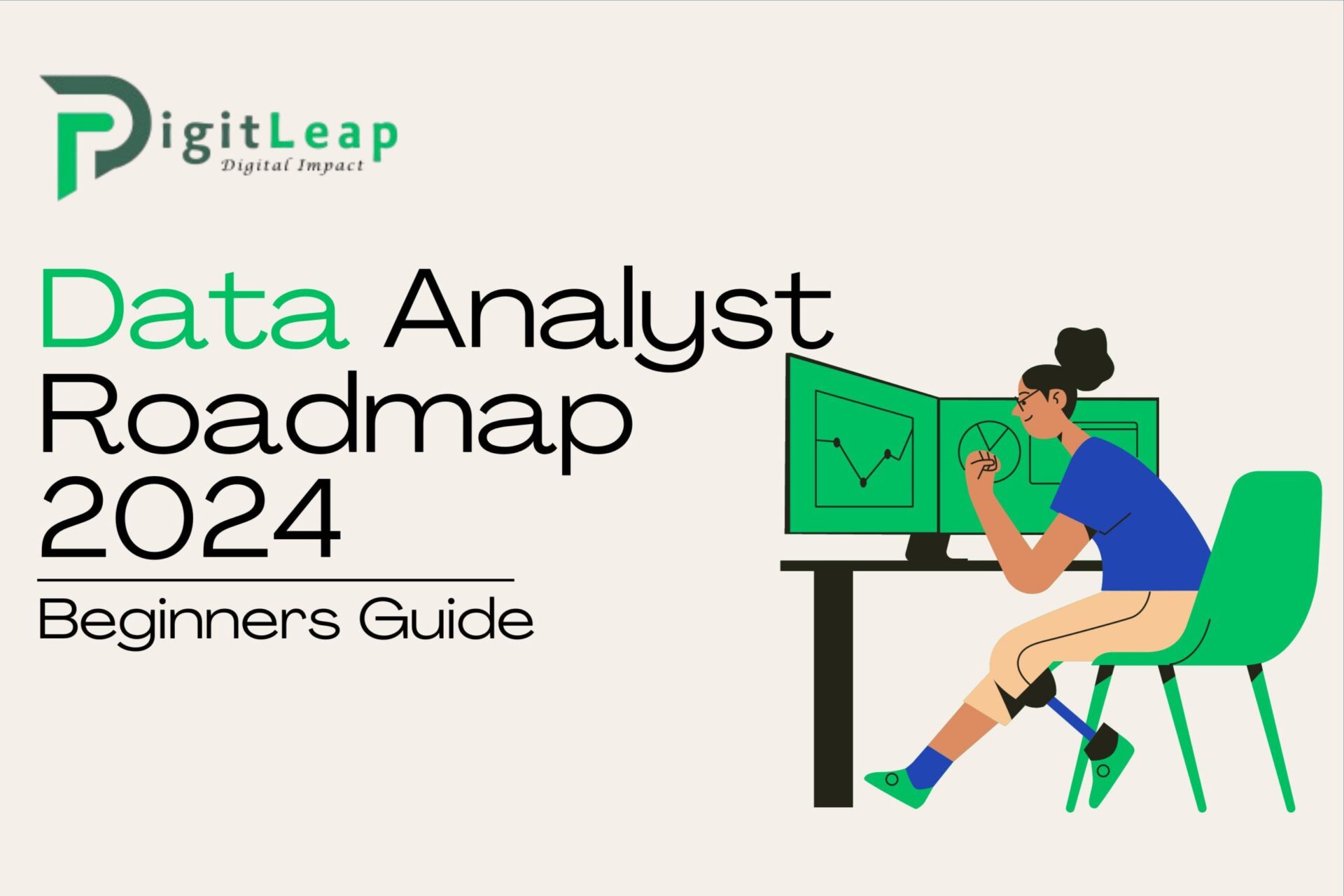Data Analyst Roadmap 2024: Beginners Guide
Introduction
Data analysis has emerged as one of the most sought-after career paths in today’s data-driven world. As organizations increasingly rely on data to make informed decisions, the demand for data analysts continues to grow. Whether you’re new to the field or looking to shift careers, this Data Analyst Roadmap for 2024 provides a comprehensive guide on the skills, tools, and steps needed to become a successful data analyst.
1. Who is a Data Analyst?
a. Role of a Data Analyst
A data analyst is responsible for collecting, processing, and analyzing data to provide actionable insights. They work closely with businesses to help make data-driven decisions by interpreting patterns, trends, and relationships in complex datasets.
b. Importance of Data Analysis in 2024
In 2024, businesses are expected to rely even more on data to gain a competitive edge. From enhancing customer experiences to improving operational efficiency, data analysts play a critical role in shaping the future of businesses across industries.
2. Roadmap to Becoming a Data Analyst in 2024
a. Educational Requirements
- Bachelor’s Degree: A degree in fields like mathematics, statistics, computer science, economics, or business can provide a strong foundation.
- Certifications and Courses: While a degree is helpful, there are numerous online platforms (like Coursera, edX, and Udemy) offering data analytics courses and certifications that are just as valuable.
b. Learn the Basics of Data Analysis
Before diving into advanced skills, beginners must understand the core concepts of data analysis:
- Data Types: Structured and unstructured data.
- Basic Statistics: Mean, median, mode, standard deviation, and probability.
- Data Collection: Gathering data from various sources such as databases, surveys, or web scraping.
3. Master Key Tools for Data Analysis
a. Excel
Excel is an essential tool for any aspiring data analyst. It allows you to clean, manipulate, and analyze data using functions, pivot tables, and visualizations.
b. SQL (Structured Query Language)
SQL is crucial for querying databases and retrieving data. Learning SQL helps you manage large datasets, filter data, and create reports efficiently.
c. Python/R
Both Python and R are powerful programming languages used in data analysis. Python is more versatile, while R is often preferred for statistical analysis. Mastering one or both will be beneficial.
d. Data Visualization Tools
Visualization tools such as:
- Tableau: Widely used for creating interactive visualizations and dashboards.
- Power BI: A Microsoft tool for transforming raw data into detailed insights. These tools help present data findings in a clear and visually appealing way.
4. Learn Data Wrangling and Cleaning Techniques
a. Data Cleaning
Data is rarely clean and ready for analysis. Data analysts must be adept at cleaning data, handling missing values, and removing outliers to ensure accuracy.
b. Data Transformation
Transforming raw data into a format suitable for analysis is critical. Techniques like normalization, aggregation, and scaling are common transformations.
5. Understand Data Analysis Techniques
a. Descriptive Analytics
This involves summarizing and interpreting historical data to understand what happened. It includes techniques such as data aggregation, trend analysis, and clustering.
b. Predictive Analytics
Predictive analytics uses historical data to predict future outcomes. By learning machine learning models like regression analysis, classification, and time series forecasting, data analysts can make valuable predictions for businesses.
6. Develop Business Acumen
a. Understanding Business Objectives
A successful data analyst must not only be skilled in technical aspects but also understand business goals. The ability to align data analysis with business strategy is crucial.
b. Communicating Insights
Presenting complex data findings in a clear and concise manner to non-technical stakeholders is key. Strong communication skills, both written and verbal, are essential for a data analyst.
7. Build a Data Analyst Portfolio
a. Personal Projects
Working on personal projects, such as analyzing publicly available datasets, is a great way to showcase your skills. Create a GitHub repository to store and share your code and analysis.
b. Case Studies
Working on real-world problems or case studies allows you to apply your knowledge and demonstrate your problem-solving skills.
c. Internships and Freelance Projects
Internships or freelance projects are excellent opportunities to gain hands-on experience and build your portfolio.
8. Keep Up with Emerging Trends in Data Analytics
a. AI and Machine Learning
AI and machine learning are revolutionizing data analysis. In 2024, data analysts must stay updated with the latest advancements in machine learning algorithms, automation, and AI-driven analytics.
b. Big Data and Cloud Computing
With the rise of big data, tools like Apache Hadoop and cloud platforms such as AWS, Google Cloud, and Azure are essential for managing and analyzing massive datasets.
c. Data Privacy and Security
As data privacy regulations tighten, data analysts must be aware of laws like GDPR and ensure ethical data handling.
9. Job Prospects for Data Analysts in 2024
a. Industries Hiring Data Analysts
Data analysts are in demand across various industries, including finance, healthcare, e-commerce, and technology. The ability to work across multiple sectors provides flexibility and job security.
b. Salary Expectations
In 2024, entry-level data analysts can expect salaries ranging from $60,000 to $80,000 per year. With experience, senior analysts and data scientists can command salaries well over $100,000.
c. Career Progression
A data analyst can progress into roles like data scientist, data engineer, business analyst, or analytics manager. The field offers numerous paths for growth and specialization.
10. FAQs about Data Analyst Career
a. Is data analysis a good career choice in 2024?
Yes, data analysis is one of the fastest-growing fields. With businesses continuing to rely on data for decision-making, demand for data analysts will remain strong.
b. Do I need a degree to become a data analyst?
While a degree can help, many data analysts have succeeded through self-study and certifications. The key is having the right skills and experience.
c. How long does it take to become a data analyst?
The time it takes depends on your background. For someone starting from scratch, it can take 6 months to a year of focused learning to become proficient.
Conclusion
Becoming a data analyst in 2024 is a rewarding career choice, offering job stability, competitive salaries, and the chance to work in a wide range of industries. By following this roadmap—learning key skills, mastering essential tools, and building a solid portfolio—you can successfully enter the field of data analysis and excel in this dynamic profession.






